二-从C到C++
本章会介绍一些C++拓展的非面向对象的功能
- 引用
1 概念
引用从一定程度上讲是指针的平替,几乎被所有的面向对象语言所使用。引用相当于对某一目标变量起“别名”。
操作这个别名,与操作原变量一样。(操作同一块地址)不能有相同别名
#include <iostream>
using namespace std;
int main()
{
int a = 1;
// b是a的引用
int &b = a;
cout << a << " " << &a << endl; // 1 0x61fe88
cout << b << " " << &b << endl; // 1 0x61fe88
return 0;
}
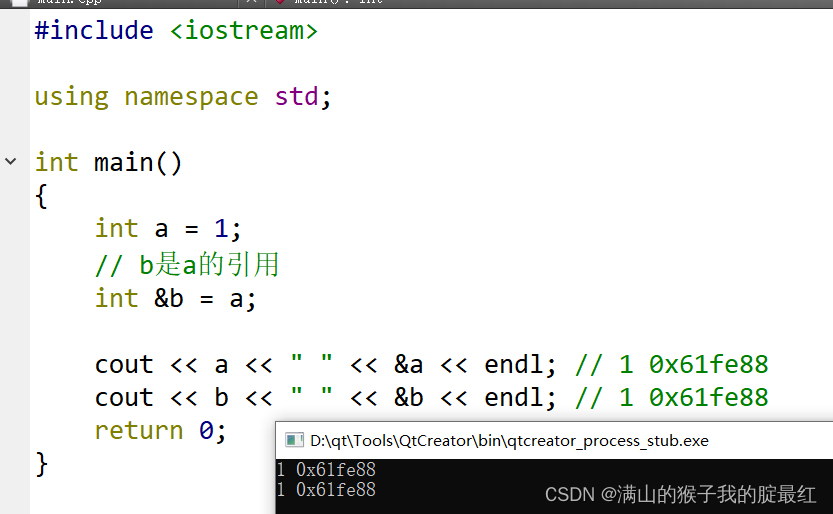
2 引用的性质
1)可以改变引用的值,但是不能再次成为其他变量的引用
#include <iostream>
using namespace std;
int main()
{
int a = 1;
// b是a的引用
int &b = a;
int c = 3;
b = c; // 只是单纯的赋值,不是引用,b还是a的引用
cout << a << " " << &a << endl; // 1 0x61fe88
cout << b << " " << &b << endl; // 1 0x61fe88
cout << c << " " << &c << endl; // 1 0x61fe88
return 0;
}
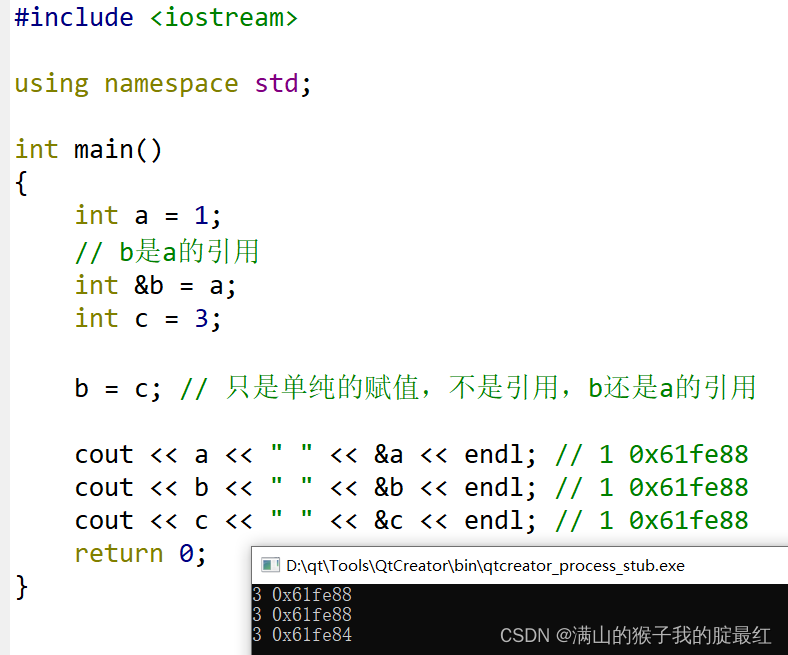
2)声明引用时,必须要初始化
#include <iostream>
using namespace std;
int main()
{
int a = 1;
// int &b; // 错误 引用必须要初始化
cout << a << " " << &a << endl; // 1 0x61fe88
// cout << b << " " << &b << endl; // 1 0x61fe88
return 0;
}
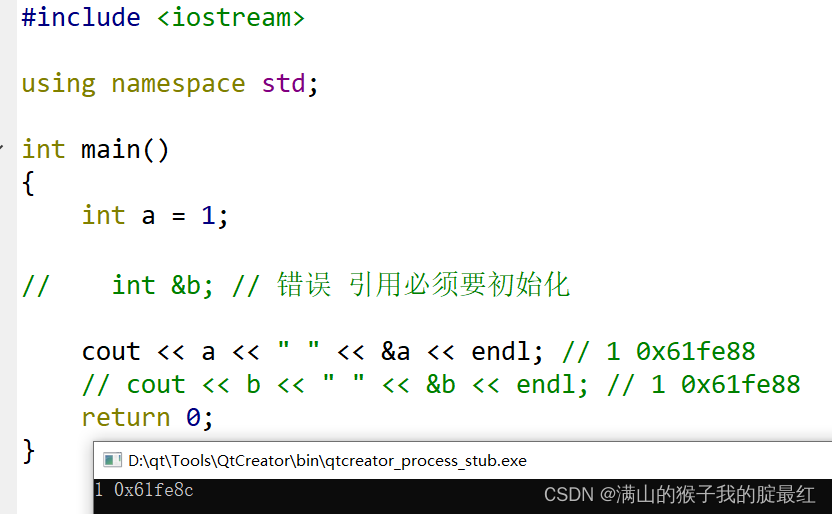
3)声明引用的时候,不能初始化为null
#include <iostream>
using namespace std;
int main()
{
int a = 1;
// int &b = NULL; // 错误,引用不能初始化为NULL
cout << a << " " << &a << endl; // 1 0x61fe88
// cout << b << " " << &b << endl; // 1 0x61fe88
return 0;
}
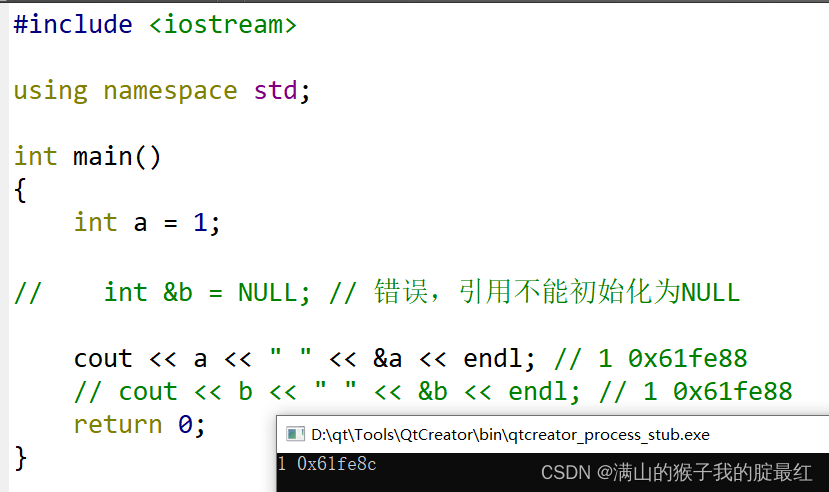
4)声明引用的时候,初始化的值可以是纯数值,但是此时需要使用const关键字修饰引用,表示该引用为常量引用,这样的引用的值不能改变。
#include <iostream>
using namespace std;
int main()
{
int a = 1;
const int &b = 444;
// b = 2; // 错误 常量引用的数值不能被改变
cout << a << " " << &a << endl; // 1 0x61fe88
cout << b << " " << &b << endl; // 1 0x61fe88
return 0;
}
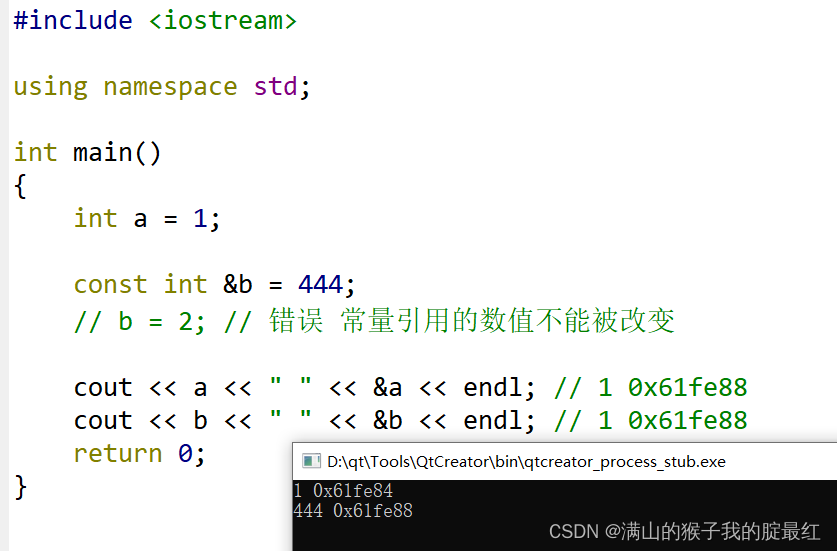
5)可以将变量引用的地址赋值给一个指针,此时指针指向的还是原来的变量。
#include <iostream>
using namespace std;
int main()
{
int a = 1;
int &b = a;
int *c = &b;//指针c
cout << a << " " << &a << endl; // 1 0x61fe88
cout << b << " " << &b << endl; // 1 0x61fe88
cout << *c << " " << c << endl; // 1 0x61fe84
return 0;
}
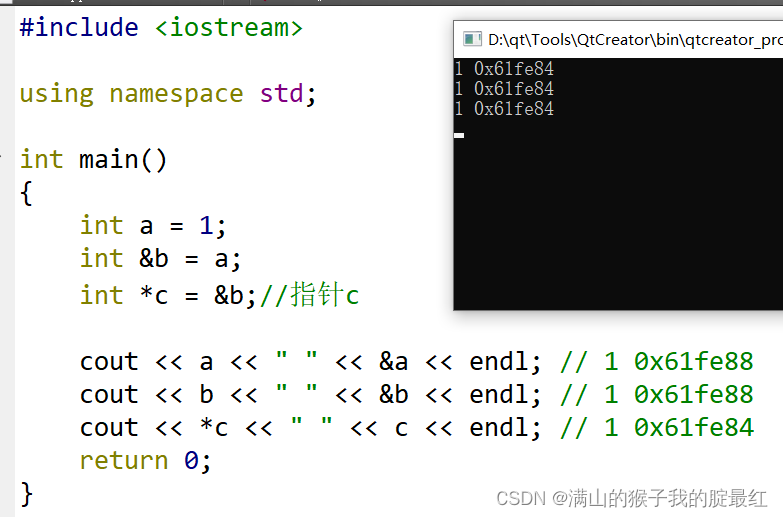
6)可以使用const修饰引用,此时如果原变量的值改变,引用的值也改变
#include <iostream>
using namespace std;
int main()
{
int a = 1;
const int &b = a;
// b++; // 错误,b是只读的
a++;
cout << a << " " << &a << endl; // 2 0x61fe88
cout << b << " " << &b << endl; // 2 0x61fe88
return 0;
}

【思考】
写一个函数,函数有两个参数a和b,函数的功能是交换两个传入的参数【原来变量】的值。
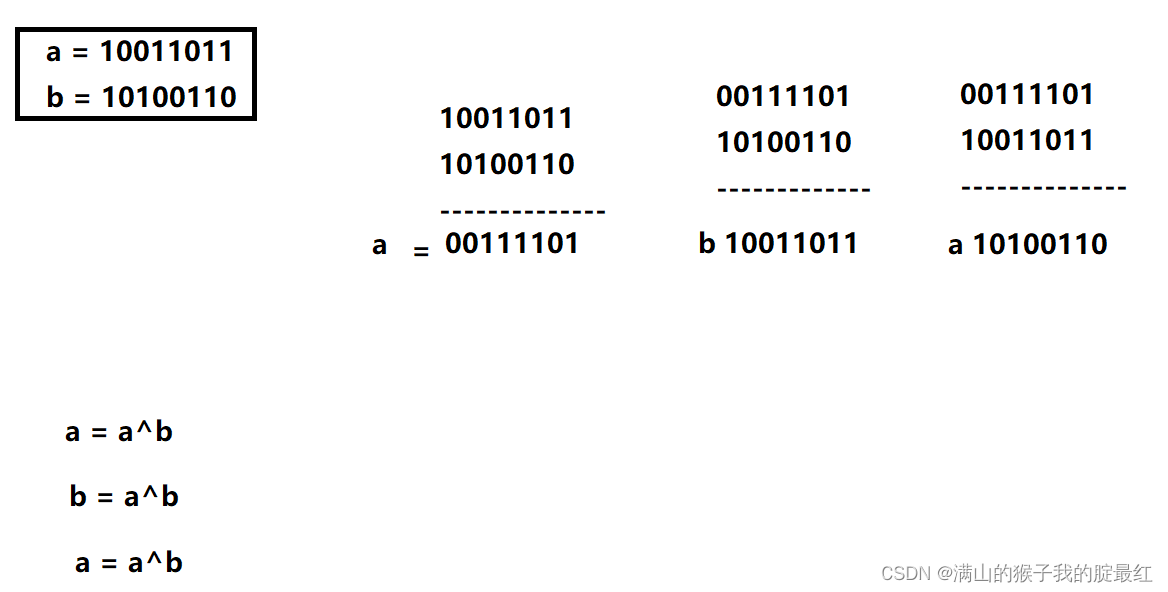
#include <iostream>
using namespace std;
//c语言普通模式
void type1(int *a,int *b)
{
int c;
c=*a;
*a=*b;
*b=c;
}
//c语言异或
void type2(int *a,int *b)
{
*a=*a^*b;
*b=*a^*b;
*a=*a^*b;
}
//不会产生副本
void type3(int &x,int &y)
{
x=x^y;
y=x^y;
x=x^y;
}
int main()
{
int a = 1;
int b = 5;
cout <<"a=" << a << " " << &a << endl;
cout <<"b=" << b << " " << &b << endl;
// type1(&a,&b);//c语言普通模式
// type2(&a,&b);//c语言异或
type3(a,b);//不会产生副本
cout<<"----------------------"<<endl;
cout <<"a=" << a << " " << &a << endl;
cout <<"b=" << b << " " << &b << endl;
return 0;
}

引用作为参数进行定义的时候,在参数传递时,是不会产生副本的,这样会提高运行效率,我们在正常编程当中,建议使用引用进行传递参数。
引用形参,在不参与计算的情况下,我们建议使用const进行修饰。以达到引用的安全性。